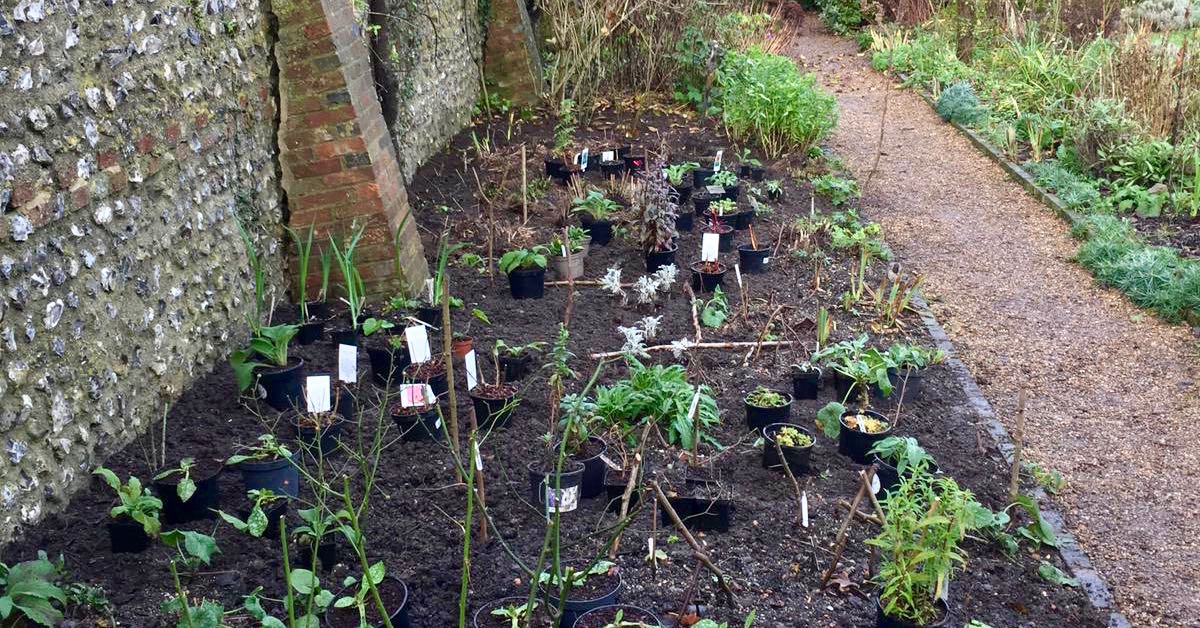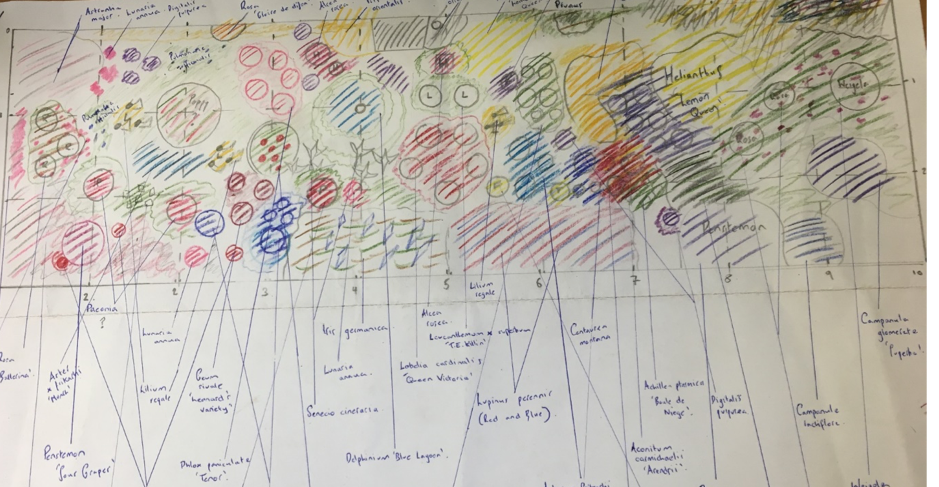Restoring Charleston’s Studio Border

Our Gardener, Harry Hoblyn, writes about his project to restore the garden’s studio border at Charleston.
During my year spent at Charleston as trainee gardener, I have widened my knowledge and understanding of horticulture, and developed my skills as a gardener. Fiona Dennis’ mentorship has been invaluable. Inspired by her passion for researching the garden’s heyday, I can begin to visual its Bloomsbury era makeup with more clarity. The garden was (and still is) a setting alive with colour, scent, and form; the perfect muse for a painter’s palette.
It therefore seemed apt that for my final project here I would undertake to restore part of the studio border leading down from the upper terrace. We chose this border because it had begun to lack character, plant diversity, and depth of colour. Certain herbaceous perennials (Acanthus mollis, Helianthus ‘Lemon Queen’, Iris orientalis, Solidago ‘Goldenmosa’) were dominant, and pernicious weeds (ground elder and bindweed) crept through the garden wall.
Taking inspiration from Vanessa Bell and Duncan Grant’s paintings of the border, I felt that the atmosphere conjured on leaving the studio should be light, bright, and transparent, evoking an ethereal quality, and one that would be accommodating to an afternoon spent with needlework in the sun. This, however, was not the case. Rosa ‘Ballerina’ and low-lying perennials nudged their way onto the terrace, while tall aforementioned perennials and a triffid-like cardoon (Cynara cardunculus) blocked one’s view into the garden. My objectives were therefore fourfold:
- Remove pernicious weeds and curb the influence of over dominant herbaceous perennials.
- Open up the vista to recreate the feel of Vanessa Bell and Duncan Grant’s paintings.
- Redesign the border using artwork as a stimulus and incorporating Bloomsbury era plants.
- Introduce more cohesion and greater diversity to the border.

Harry’s plan for restoring the border;
photograph: Harry Hoblyn
Primary steps involved mapping out pre-existing plantings, removing undesirables, and pruning back trees and shrubs. Rosa ‘Ballerina’ was pruned hard to give it a lighter quality, while an unhealthy ornamental cherry was removed altogether. Removing strands of bindweed and ground elder, and the deeply spreading rhizomes of Iris orientalis, took longer than anticipated. I was left with a blank canvass, except for a few species, which remained in place on account of merit (these include Astrantia major, Lupinus polyphyllus, Papaver orientalis ‘Beauty of Livermere’, three Paeonia(s), and Iris germanica).
During rainy moments, I took to the office to research heritage plants, inspect artworks, and work on design plans. Certain focal points were identified from paintings: pink phlox, towering hollyhocks, striking spires of red, and a golden-apricot double rose blooming profusely across the wall. Research led me to replicate these plants with heritage cultivars, thus introducing Phlox paniculata ‘Tenor’ (1939), Lobelia cardinalis ‘Queen Victoria’, and Rosa ‘Gloire de Dijon’ (1853). Other plants introduced include Geum rivale ‘Leonard’s Variety’ (1923), Helenium ‘Moerheim Beauty’ (1930), Aster x frikartii ‘Monch’ (1918), Leucanthemum x superbum ‘T.E. Killin’, and the only pre-1945 Delphinium I could find on the market (‘Blue Lagoon’).
Further important Bloomsbury era plants, such as Alcea rosea (hollyhocks), the silver-foliaged Senecio cinererea, Eryngium bourgatii (sea holly), Lunaria annua (honesty), Hesperis matronalis (Sweet Rocket), Aconitum carmichaelii ‘Arendsii’ (monkshood), as well as other plants and bulbs were (re)introduced.
Time will tell how the border develops. Since planting up the border with Fiona in early December, spring has begun to take hold, and I am gratified to see that leaves and bulbs are beginning to strikethrough the layer of organic mulch which was added after planting. I look forward to returning to the border throughout the flowering season, and hope that staff, volunteers and visitors will also gain inspiration from a fresh atmospheric quality of lightness and tranquillity on leaving through the studio doorway.